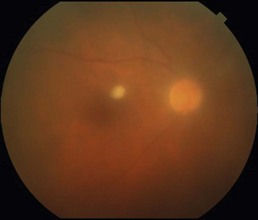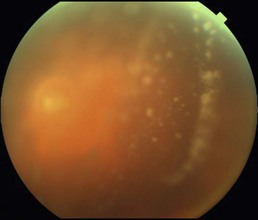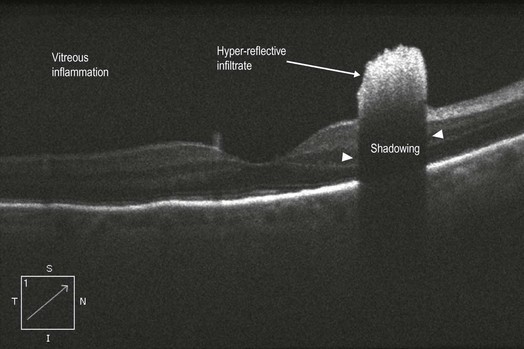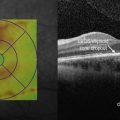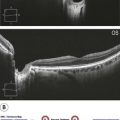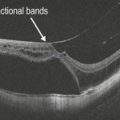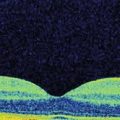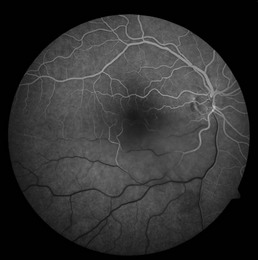Candida Albicans Endogenous Endophthalmitis
Clinical Features:
The clinical appearance of C. albicans endogenous endophthalmitis is very characteristic. The lesions are typically small areas of chorioretinitis involving the posterior pole, are creamy-white in color and with fairly well-defined borders (Fig. 18.4.1). Overlying vitritis is typical, often in a ‘string of pearls’ arrangement (Fig. 18.4.2).
OCT Features:
C. albicans retinal infiltrates are located superficially in the retina. They are hyper-reflective, dome-shaped elevations overlying the inner retina (Fig. 18.4.3). They obscure the underlying retina due to shadowing. Signal quality can be poor due to the presence of overlying inflammatory debris in the vitreous cavity.

